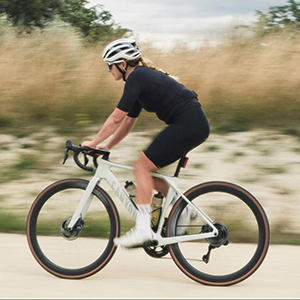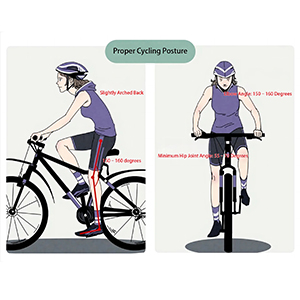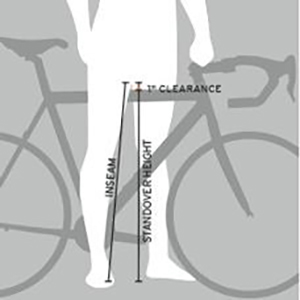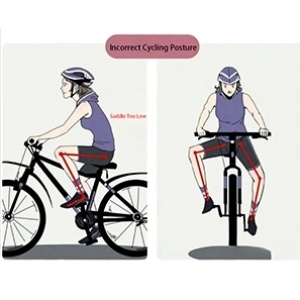
Correct Road Bike Posture
When you ride a road bike, the way you sit and hold your body makes a big difference. Correct road bike posture not only helps you ride faster and with less effort, but it also helps prevent soreness after long rides. By learning how to position your head, back, arms, and legs, you can enjoy smoother rides and reduce the risk of injury. Good posture is the foundation of comfortable and efficient cycling.
Why Correct Road Bike Posture Matters
Getting your road bike posture right is about more than just looking good on the bike. Proper posture helps you transfer power efficiently from your legs to the pedals, so you ride faster with less wasted energy. It also reduces strain on your neck, back, and wrists, making long rides more comfortable. Most importantly, the right position lowers your risk of common cycling injuries caused by poor alignment.

Key Elements of Proper Road Bike Posture
Getting your posture right means paying attention to several parts of your body. Each area works together to keep you balanced, efficient, and comfortable while riding. Let’s examine the key points step by step.
Head and Neck Position
Keep your head relaxed and your eyes forward, not down at the front wheel. This helps you stay aware of the road while keeping strain off your neck. Try to avoid tensing your shoulders as you look ahead.
Back and Core Alignment
Once your head and neck are in the right place, the next focus is your back and core. Your back should form a smooth curve, not a stiff arch. A strong core supports this position, letting you ride longer without discomfort. Engage your abdominal muscles lightly to reduce pressure on your lower back.
Arm and Wrist Position
With your upper body set, it’s time to think about your arms and wrists. Bend your elbows slightly instead of locking them straight. This acts like suspension, absorbing bumps in the road. Keep your wrists in line with your forearms so they don’t twist and cause numbness over time.
Hip and Knee Tracking
Finally, your lower body plays a big role in posture and power transfer. Your hips should stay stable, not rocking from side to side. Knees should move in a straight line with the pedals, helping you push efficiently while protecting your joints. A steady hip and knee position reduces wasted energy and lowers the chance of injury.

How to Find the Right Bike Frame Size for You
Before you make any adjustments to your road bike, it’s essential to start with a frame that fits your body. Choosing the right bike frame size ensures you can maintain correct posture, pedal efficiently, and avoid discomfort or injury on every ride.
Measure Your Inseam
Start by measuring your inseam length. Stand straight with your feet about 6–8 inches apart and measure from the floor to your crotch. This helps determine the right seat height and frame height.

Women vs. Men: Differences in Road Bike Posture
Men and women often have different body proportions that affect how they sit on a road bike. These differences influence saddle height, handlebar reach, and overall comfort. Understanding them helps you maintain proper posture, pedal efficiently, and avoid common issues like hip rocking, lower back strain, or numb hands.
Here’s a quick comparison:
|
Body Feature |
Women |
Men |
Adjustment Tip |
|
Torso Length |
Shorter |
Longer |
Adjust handlebar reach to keep back natural |
|
Hip Width |
Wider |
Narrower |
Check saddle width and tilt for stability |
|
Arm Length |
Shorter |
Longer |
Adjust stem length for comfortable reach |
|
Leg Length |
Shorter |
Longer |
Adjust saddle height so knees track straight |
Adjusting Road Bike Posture for Different Riding Conditions
Your posture on a road bike should change depending on the type of ride you’re doing. Small adjustments help you stay comfortable, maintain control, and ride efficiently in every situation. Let’s break down how to position your body for common riding conditions.
Uphill Climbing Posture
When climbing, shift your weight slightly forward to keep the front wheel stable. Keep your elbows bent and your core engaged. This helps you push more power through the pedals without straining your back or neck.
Descending Posture
On downhill sections, lower your torso and keep your elbows bent to absorb shocks. Move your hips back slightly for balance and keep your eyes focused on the road ahead. This position improves stability and control at higher speeds.
Sprinting and High-Speed Riding Posture
During sprints, maintain a low, aerodynamic posture. Keep your back flat and hands on the drops if possible. Engage your core and drive power through your legs while keeping your upper body relaxed to prevent tension.
Long-Distance Riding Posture
For endurance rides, prioritize comfort. Keep your back slightly upright and elbows soft. Alternate hand positions on the handlebars to prevent numbness and relieve pressure points over long periods.
Short Rides and Daily Training Posture
On shorter rides, you can afford a slightly more aggressive posture to focus on efficiency and speed. Still, maintain a relaxed upper body and proper knee alignment to avoid unnecessary strain during daily training.
Exercises and Stretches to Maintain Proper Posture
Maintaining correct road bike posture isn’t just about bike adjustments; it also depends on your body. Strengthening and stretching key muscles helps you ride comfortably and efficiently.
Core Strengthening Exercises
A strong core supports your back and keeps your hips stable on the bike. Exercises like planks, bridges, and bird-dogs help engage your abdominal and lower back muscles. Even a few minutes a day can make a noticeable difference in your posture and power transfer.
Flexibility Stretches for Cyclists
Tight muscles can pull your body out of alignment. Stretch your hamstrings, hip flexors, shoulders, and chest regularly to maintain flexibility. Simple stretches before and after rides help prevent stiffness and improve your riding comfort.
Recovery Routines After Long Rides
After long rides, take time to cool down and release tension. Foam rolling, gentle stretching, and light mobility exercises help your muscles recover and keep your posture strong for the next ride.
Common Posture Mistakes and How to Fix Them
Even experienced cyclists can develop habits that hurt performance and comfort. Recognizing common mistakes helps you ride more efficiently and prevent injuries.

Using Technology to Enhance Posture
Modern technology can help you maintain proper road bike posture and improve your riding experience. Bike fit tools, such as digital saddle height calculators and adjustable stems, allow precise adjustments to match your body.
Wearable devices like cycling power meters and posture sensors give real-time feedback on your position and pedaling efficiency. Some apps even track your posture over time, highlighting areas where you might be straining your back, neck, or knees.
By using these tools, you can fine-tune your setup, prevent discomfort, and ride more efficiently. Technology doesn’t replace good habits, but it helps you maintain them consistently on every ride.
Quick Checklist: Correct Road Bike Posture at a Glance
To make sure you maintain proper road bike posture on every ride, it helps to have a simple reference. The following checklist highlights key body areas, their correct positions, and quick tips for adjustment. Use it before each ride to stay comfortable, efficient, and safe.
|
Body Part / Area |
Correct Position |
Quick Tip |
|
Head & Neck |
Keep your head relaxed, eyes forward |
Avoid looking down at the front wheel |
|
Back & Core |
Maintain a smooth curve, engage core lightly |
Keep shoulders relaxed |
|
Arms & Wrists |
Elbows slightly bent, wrists aligned with forearms |
Acts as a natural suspension over bumps |
|
Hips & Knees |
Hips stable, knees track straight over pedals |
Prevents wasted energy and joint strain |
|
Saddle Height |
Legs extend comfortably at the bottom of the pedal stroke |
Avoid hip rocking |
|
Handlebar |
Height and reach allow relaxed shoulders and a slight elbow bend |
Adjust gradually for comfort |
|
Riding Type |
Modify posture for climbs, descents, sprints, or long rides |
Small adjustments improve efficiency and safety |
Previous :
Carbon Bike Parts GuideNext :
Best 700c Carbon Road Rims: A Complete Buyer's GuideCategories
New Blog
Copyright © 2025 Top-Fire Carbon Technology Co., Ltd. All Rights Reserved. Power by

IPv6 network supported